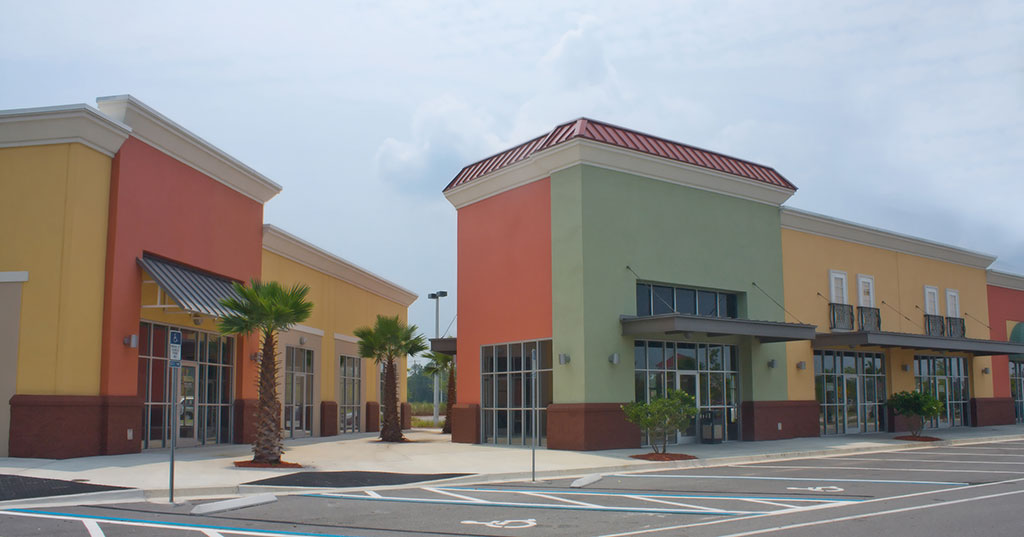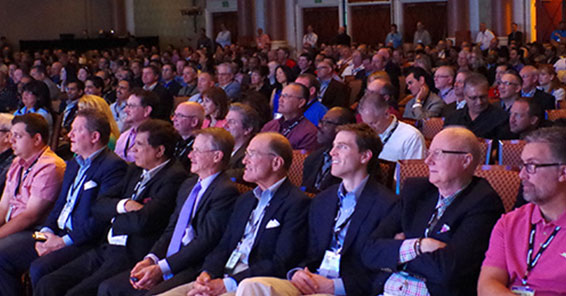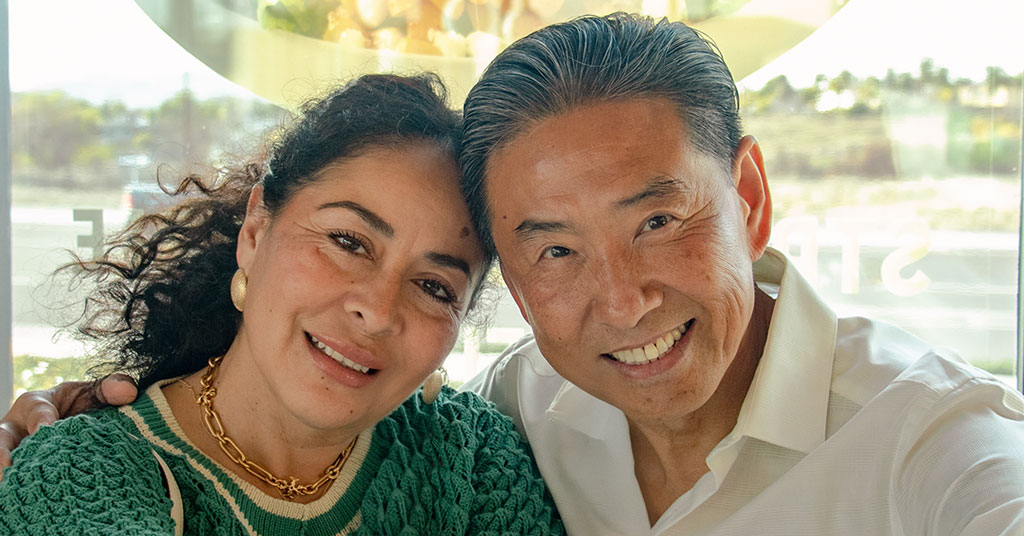Build or Buy?: 6 Growth-Minded Operators share Their Strategies

As Jesse Keyser and his brother Charles prepared to buy the local pizzeria that sustained them through college, they received some fortuitous advice, redirecting them to search for a franchised pizza brand. Now, almost 20 years later, they've built a 24-unit portfolio with three franchised brands: Little Caesars, Sport Clips, and Oxi Fresh. If you ask about their growth strategies, they have plenty to say--as do the other growth-minded franchisees we spoke with.
The first step for the Keysers is the choice of whether to build or buy. "Do both, but for different reasons," says Jesse Keyser. When it comes to buying, existing locations up for sale happen for two reasons, he says: 1) the owner isn't making money, or 2) the owner decided there are better opportunities to invest their capital. "If you have experience turning locations around, you can pick up some very good deals, depending on the life cycle of the brand," he says.
Existing units often come with top locations, he says, especially important in today's competitive real estate market. Great deals can be found in these situations, sometimes for a fraction of the cost of opening a new unit. A strong operator with deep pockets can acquire these units with the expectation of turning them around.
The choice of whether, and when, to build or buy also may be determined by a deliberate strategy. "We start with buying existing locations--what we call a platform company--because that is our core competency," says Omar Simmons, founder and managing partner of Exaltare Capital Partners. "We start with an existing business and then add new units organically. We also like to make add-on acquisitions to accelerate growth."
Simmons says this approach allows for lower start-up risk and faster ramp-up than building every location from scratch. "It also helps us learn about the brand and the model through due diligence on existing locations before we start the organic build process," he says.
This approach also allows Simmons and his partners to begin with a proven operator. "While we have run businesses day-to-day, we prefer to back strong operators with aggressive growth plans," he says. "Our skills are best applied by supporting strategic growth, financing that growth, and helping to scale the business with additional resources as needed."
Although scaling up quickly by acquiring existing locations makes sense, especially for today's larger multi-unit franchisee organizations, building anew has its own set of benefits, says Adam Saxton, co-CEO and co-owner of The Saxton Group and a 2016 Multi-Unit Franchisee Magazine MVP winner (see the Q3 2016 issue of this magazine). The company began with a single Mazzio's Pizza in 1982, expanding their holdings to 50 restaurants before selling them in 2004. Today the Saxton Group operates 68 McAlister's Deli locations.
"Organic unit development, building your own locations, is always going to create more value, but it carries with it the risk of the unknown," says Saxton. "No tool can fully evaluate a trade area or site and tell you with certainty that your chosen brand will be successful in that location. Doing so takes a lot of experience. Know your strengths."
Eric Werner, CEO of Texas Subs, has expanded the company's business so impressively it has twice made the Inc. 5000 list of the fastest-growing U.S. private companies. For Werner, the choice to buy or build is never black-and-white, but he likes to buy existing stores. "With the new, you don't know how it may perform until you open the doors," he says. "You might also be able to renegotiate a lease. It all comes down to whether you are buying at the right price. You must know what you are buying."
Building anew also can be an opportunity for someone with a passion for opening up new markets and the skill and experience to do it well. "New locations come with no bad reputation. It is what you make of it," says Werner. "If you have great marketing and operational experience, you can take a new location and have it grow at a faster rate than turning around an average location that has already settled." Additionally, he says, "A new build means there's no need to change the minds of people who have already made up their mind about doing business with a brand--and that can be expensive."
Shirin Kanji, senior vice president and chief investment officer at Impact Properties, which has diverse hotel, retail, restaurant, and real estate holdings, watches the market closely and knows that finding the perfect deal for a new build location is difficult. "Real estate that is reasonably priced and well located is hard, so building new is a challenge," he says. However, he notes, "Major brands may find it a worthwhile pursuit to grow unit count in growing areas."
Financing changes too, depending on the build or buy choice. "Both options can be financed, but the methods will be different and the cost of funds will vary," says Giovanna Koning, CFO of Falcon Holdings Management, which operates five restaurant brands. "Typically, buying an existing location requires an initial outlay and then you can finance it." Whereas, she says, building new units requires a steady stream of cash as the project develops, although some help can be found in construction loans.
Simmons, with his background in private equity, also carefully evaluates the financial dynamics of any deal, whether build or buy. "We usually buy a platform business with equity and debt," he says. "The debt has to be paid first. As a consequence, we need steady cash flows. The debt acts as a discipline to ensure the growth is measured and profitable."
As an investment advances, he continues to evaluate the financials. "While we add people and make additional investments we are making sure we get an attractive return on each investment, or we fix it or stop before getting into trouble. Our capital structure can provide early warning signals if plans are not progressing as expected."
Culture and people
Taking over an established location should also raise concerns about managing changes that might be needed in the culture. "Acquiring stores requires you to be very good at changing culture," says Keyser. "I am a big advocate of getting new general managers out of their stores to be mentored and trained by a general manager from one of our existing stores."
The reason? "The general manager of the store you recently acquired gets to see with their own eyes how you want the store to be run, and how the team works together," says Keyser. "Having that general manager who is new to your team see firsthand how a well-run team works allows them to go back and identify what needs changing in their own stores." Newly armed with that knowledge, he says, "You can expect them to come to you with a list of things they want to address and change to improve the store, resulting in faster and better results."
If you choose to build, then a different skill set is required, says Saxton, especially in a new market. "Team leaders will have to be focused on getting something off the ground from day one. Know your team's capabilities," he says.
Choosing a brand
Beyond build or buy, if the decision is whether or not to add a new brand, Keyser has an evaluation based on a brand's age and size. "The real trick is to find a brand that is emerging in that 300- to 500-unit area and to have the capital to expand faster than most of their existing franchisees," he says. "There's a perfect storm that can happen because so many franchisees have troubles making the switch from being a 1- to 3-unit store operator to a multi-unit, multi-state operator. Eventually most of the 1- to 3-unit operators sell because its intensive work for an owner, and responsibilities can't be shared with district or area managers."
At Exaltare, Simmons is comfortable with both emerging and mature brands--if the unit economics are right. "Established brands have the benefits of being around a while and recognized by consumers," he says. "The downside is that they might not have as much growth potential organically. Emerging brands for us are exciting so long as the brand is in a category we like, it is number one or number two in its category, and it has proven unit economics. We believe brands like that have the benefit of future growth, but have been around long enough to have proven value to consumers and franchisees."
For Saxton, "The best case is to find a brand that is proven and growing across multiple markets, but isn't so mature that the opportunities for the franchisee are limited," he says. "It's hard to spot a brand at that point, but if you do it will provide the best nexus between risk mitigation and opportunity runway."
When evaluating a growth opportunity, Koning always wants the answers to certain questions: Does the acquisition meet the investment objectives of management? What is the brand's vision and long-term strategic plan? What is the brand positioning? Does the brand meet a unique need in the marketplace? What is the brand's financial track record?
Never-ending diligence
Finding the right sources to answer those questions and more means thinking beyond the obvious. Keyser interviews existing franchisees, and is particular about what he's trying to find out. Interview as many as you can, he advises, but with a certain blend in mind. "What you are looking for is something like a 30/70 mix: 30 percent of the existing franchisees should impress you with their knowledge and operational experience, and 70 percent should make you realize there is a lot of room for improvement in how they run their business," he says.
"This is the opportune time to be in a brand and expand fast because there are people you can learn from and lots of people who eventually will want to sell to you," he adds. "If you can't find operators who are making some money but also need to improve their business, then you probably will not be able to grow fast through new store growth and acquisitions."
Says Koning, "You need to have a methodical approach to reviewing the financial data, and then you need to assess the operational metrics." Those operational metrics, she says, can make or break a transaction. "If the system is broken and you identify the elements, then you can make an assessment about whether it can be fixed."
"Due diligence is really important for us as private equity investors," Simmons says. "We learn the most from examining existing locations and talking with existing operators. We recognize that we are never the brand experts. Consequently, we learn a lot from talking to franchisees, franchisors in similar brands, and competing brands."
Specifically, he adds, "We learn a lot by studying the historic performance drivers, risks, and successes of a target brand." This not only provides a sense of the strength of a potential investment, he says, "it also ensures that we understand both the pros and cons of what we are buying so that we can grow quickly and effectively from that foundation."
For Saxton, you can't do enough due diligence on the front end, whether you've chosen to build or buy. "There's no substitute for spending a huge amount of time being a consumer of the brands you are evaluating. Experience what a guest experiences, again and again. Then ask yourself if you can execute that experience the same or better."
Once you've chosen a new brand, additional research is needed before breaking ground on a new unit. "When I'm looking for a place to build a restaurant I spend a huge amount of time in the market figuring out where the trade areas are, and then stay laser focused on finding the best locations in those trade areas without making compromises," says Saxton.
With a potential acquisition, he adds, "Spend the time knowing what you are buying. Ask too many questions so you can understand the risks associated with taking over another company culture and transitioning that into your own. There's no magic bullet or data point or tool for any of this. You'll need to dig in, do your research, spend the time, and then make an educated decision backed up by your own knowledge."
Share this Feature
Recommended Reading:
FRANCHISE TOPICS
- Multi-Unit Franchising
- Get Started in Franchising
- Franchise Growth
- Franchise Operations
- Open New Units
- Franchise Leadership
- Franchise Marketing
- Technology
- Franchise Law
- Franchise Awards
- Franchise Rankings
- Franchise Trends
- Franchise Development
- Featured Franchise Stories
FEATURED IN

Multi-Unit Franchisee Magazine: Issue 1, 2018

$150,000
$750,000





 The multi-unit franchise opportunities listed above are not related to or endorsed by Multi-Unit Franchisee or Franchise Update Media Group. We are not engaged in, supporting, or endorsing any specific franchise, business opportunity, company or individual. No statement in this site is to be construed as a recommendation. We encourage prospective franchise buyers to perform extensive due diligence when considering a franchise opportunity.
The multi-unit franchise opportunities listed above are not related to or endorsed by Multi-Unit Franchisee or Franchise Update Media Group. We are not engaged in, supporting, or endorsing any specific franchise, business opportunity, company or individual. No statement in this site is to be construed as a recommendation. We encourage prospective franchise buyers to perform extensive due diligence when considering a franchise opportunity.